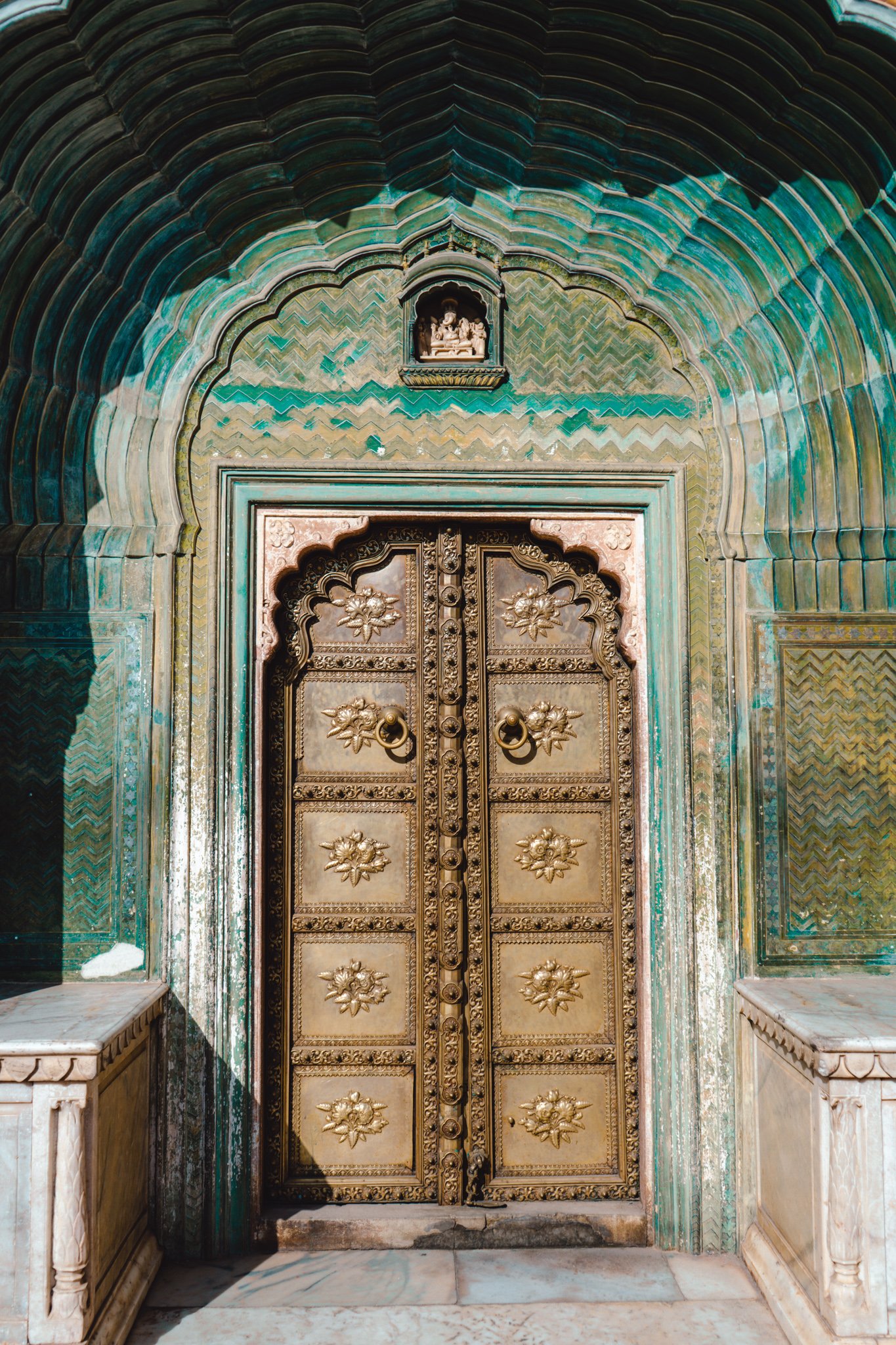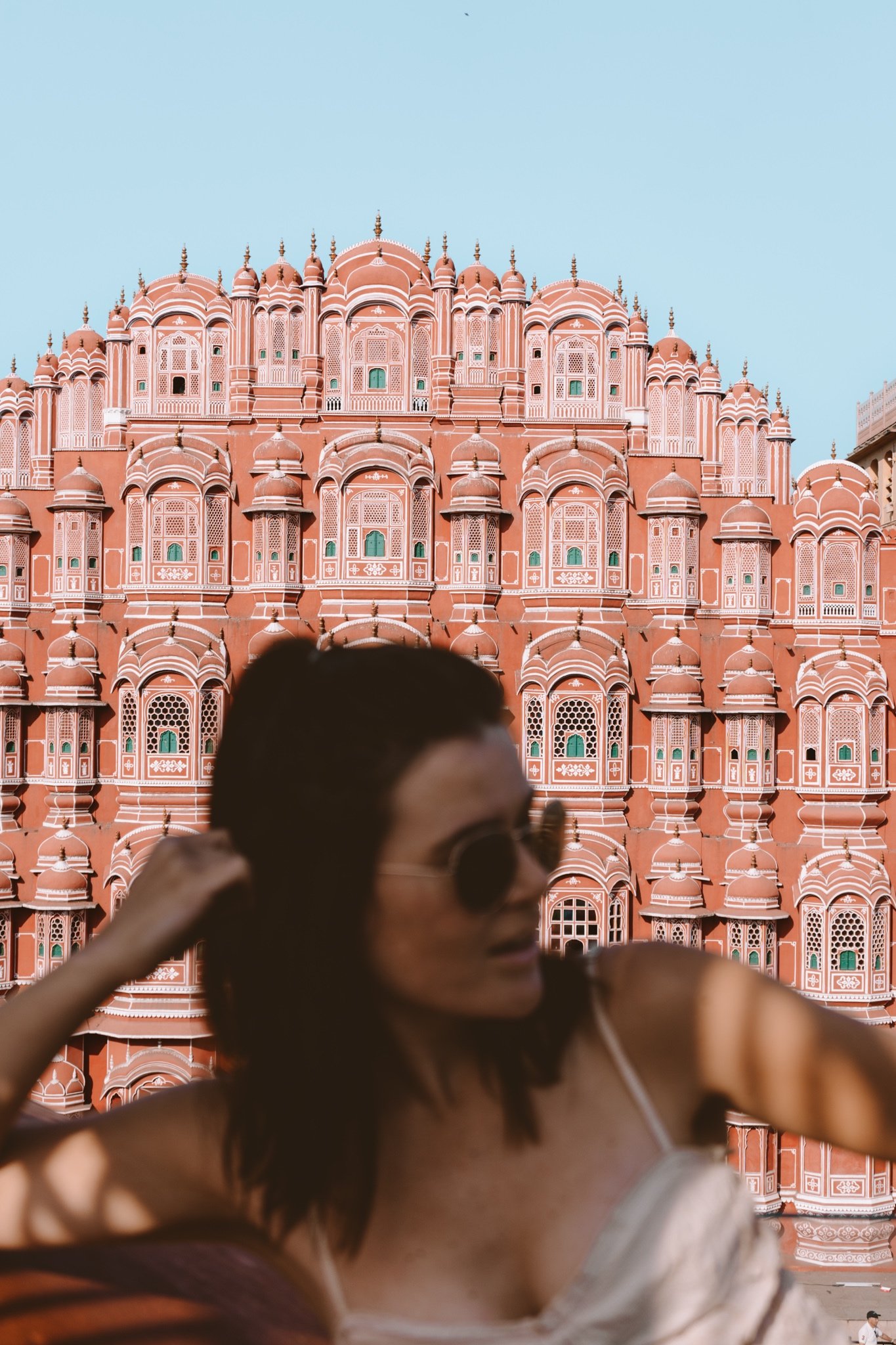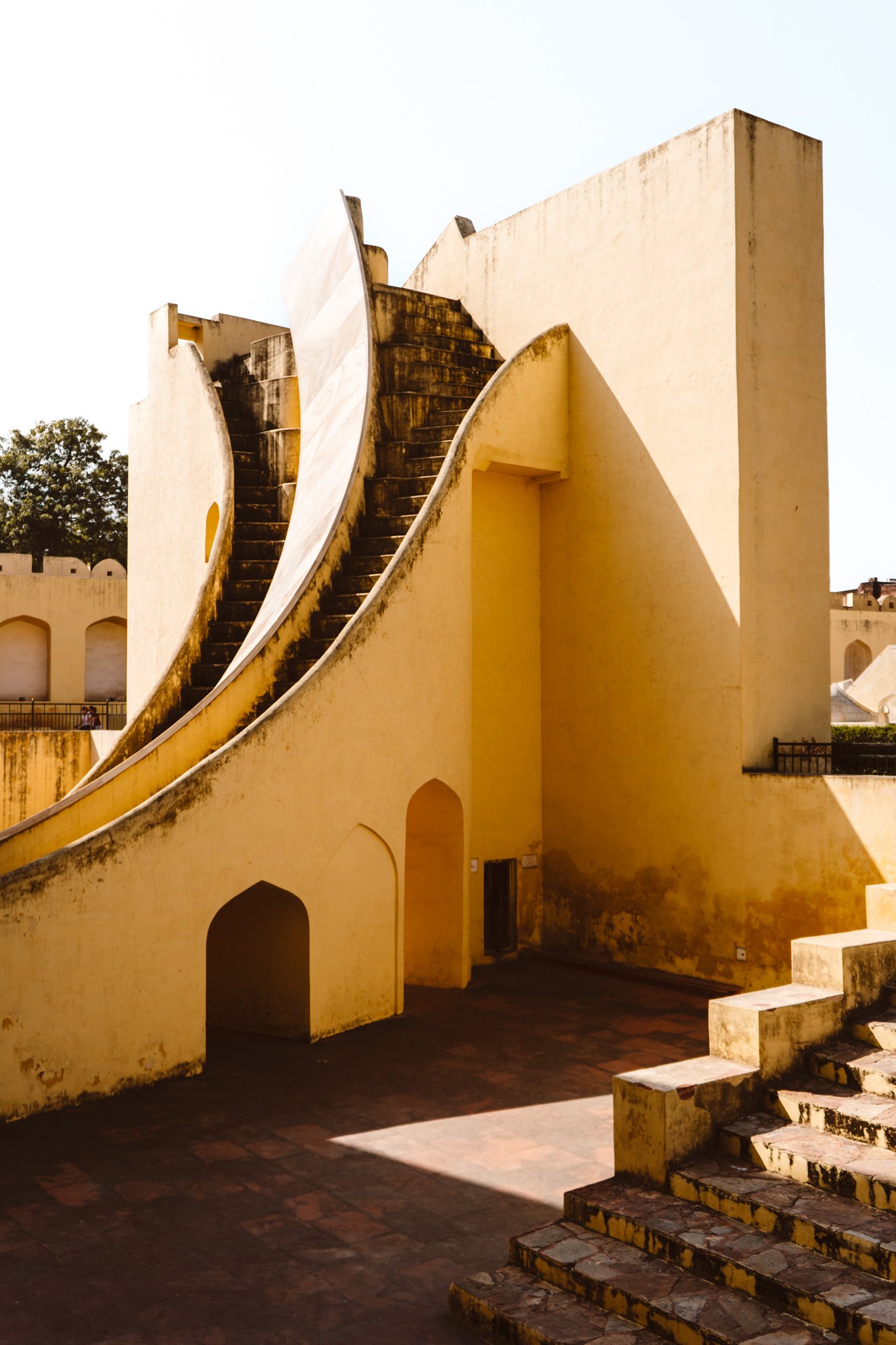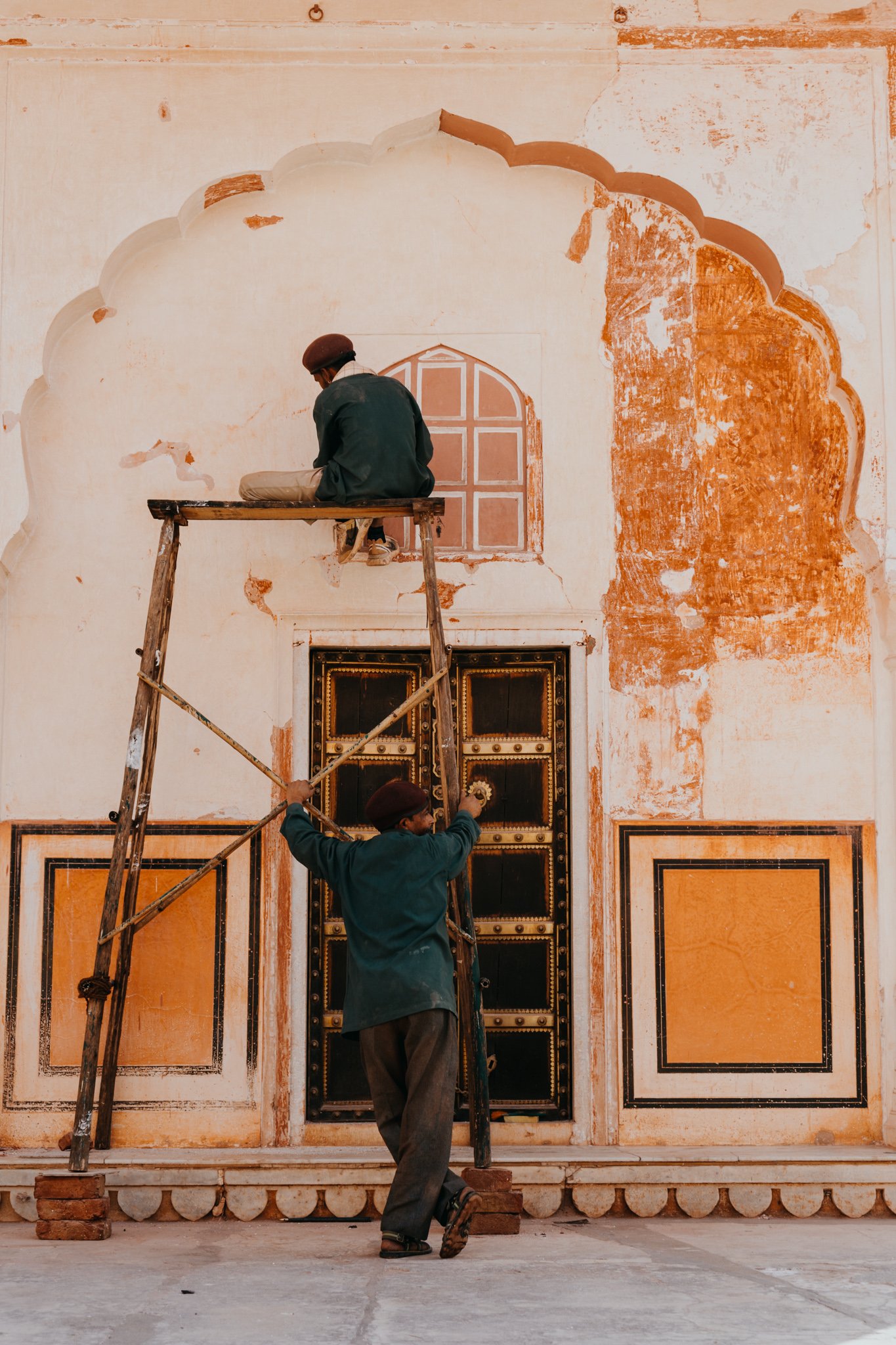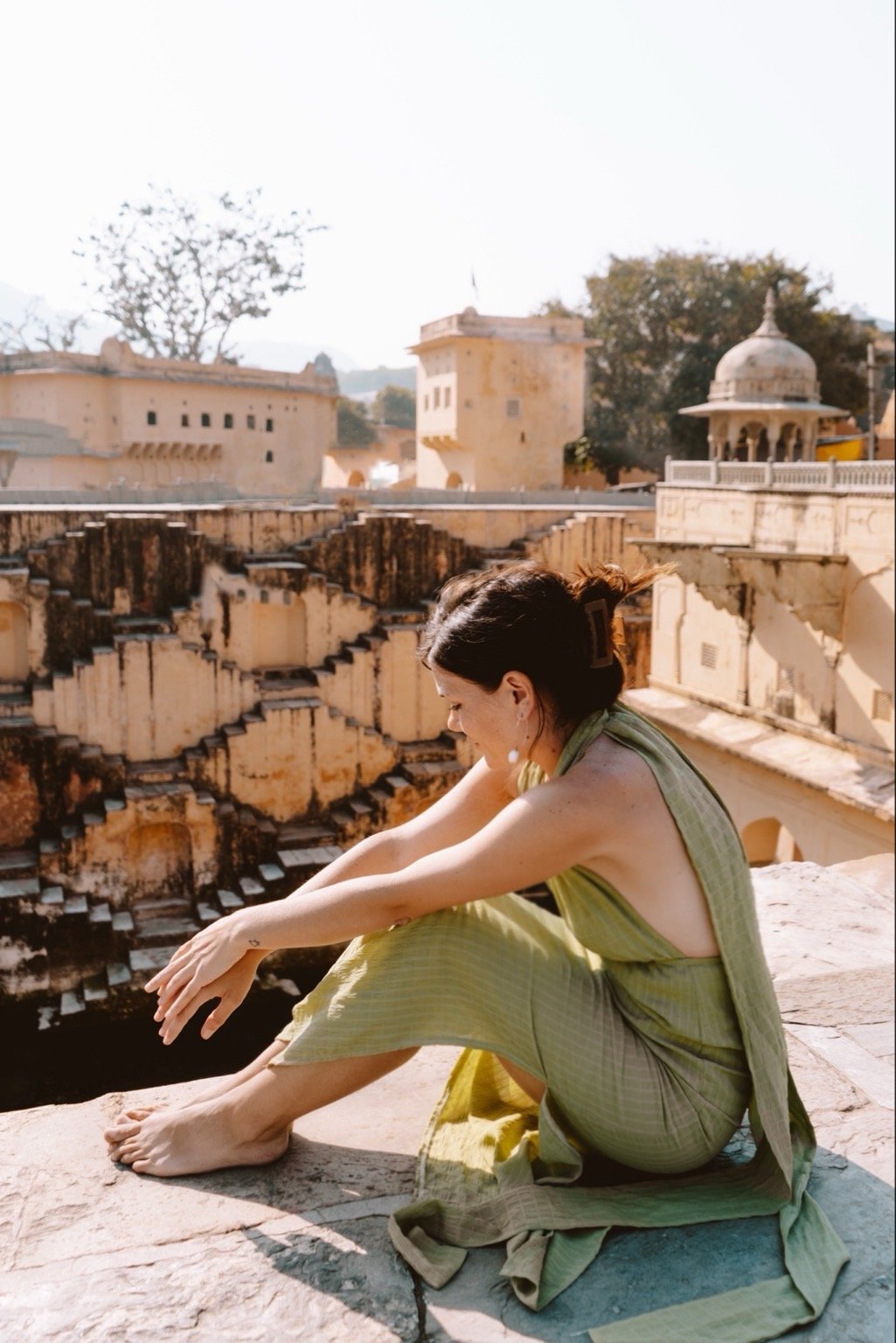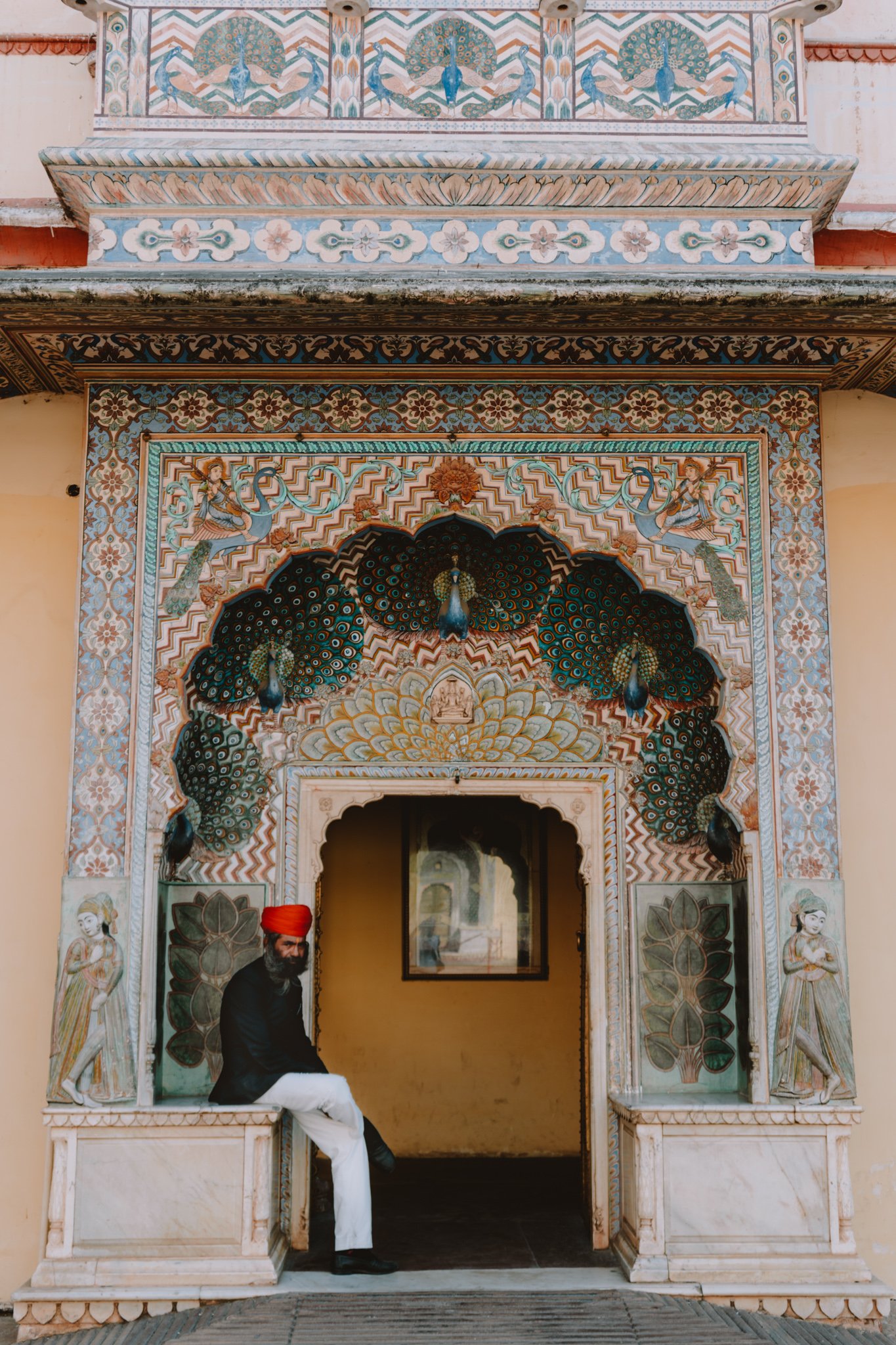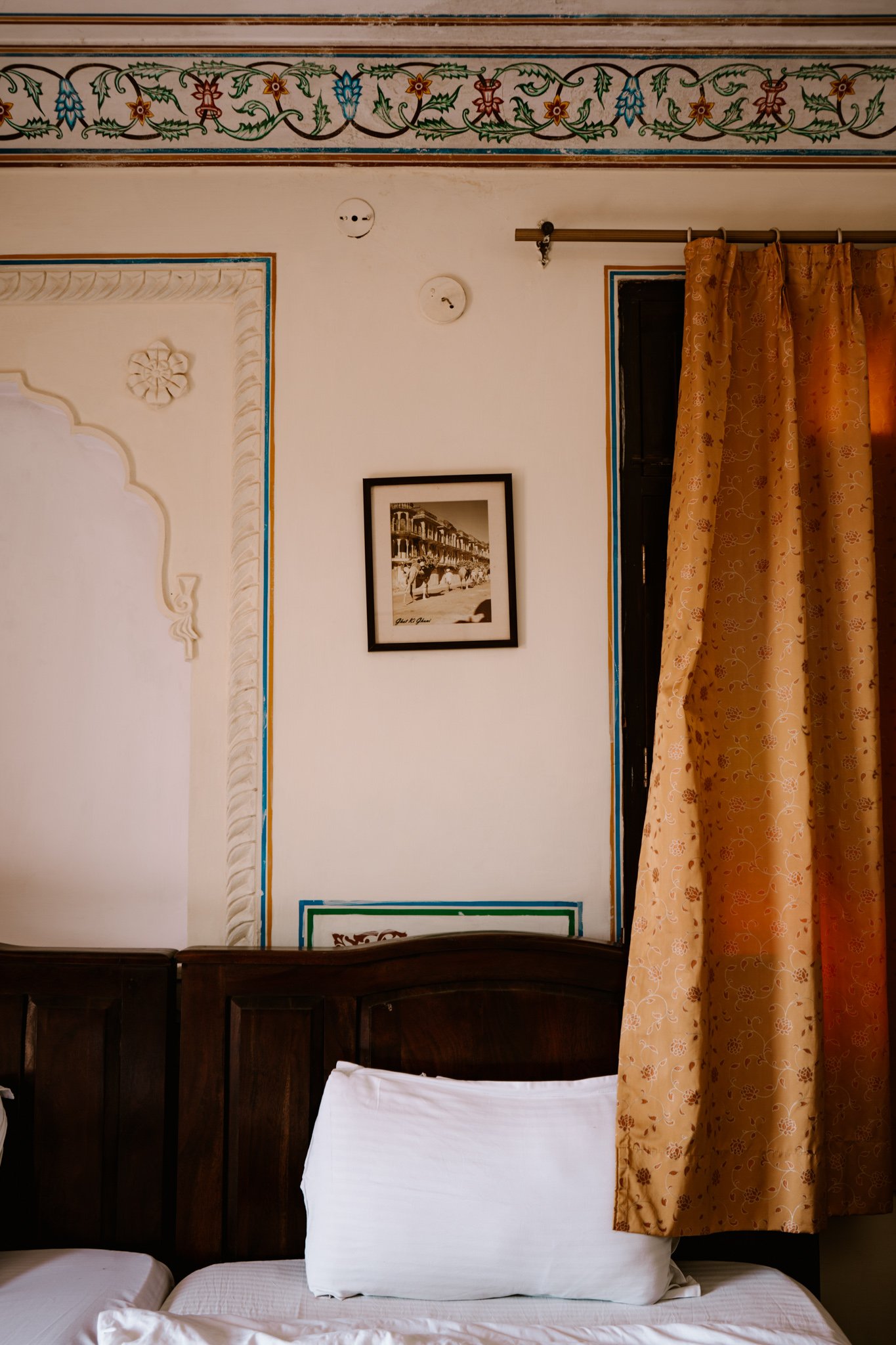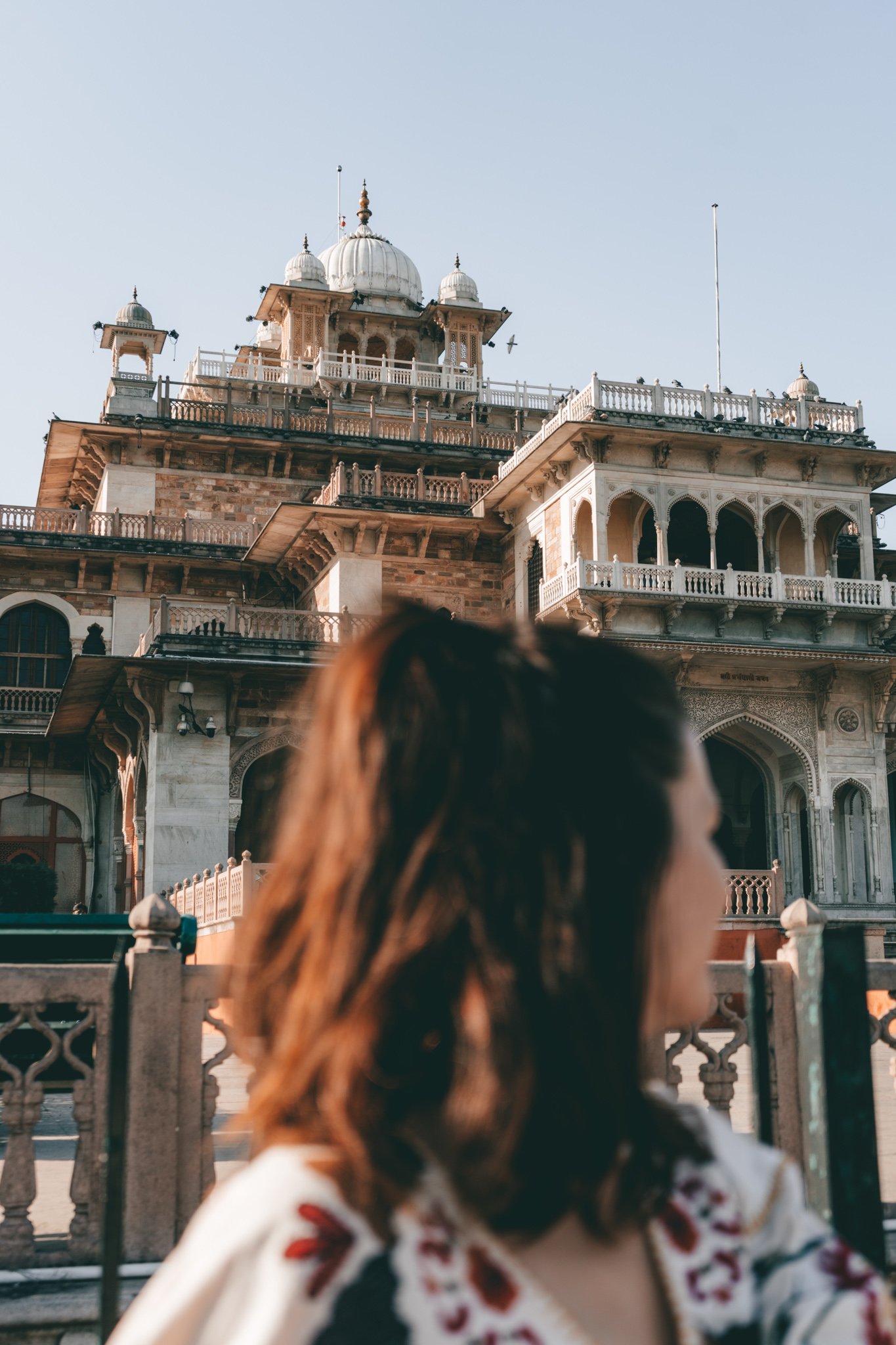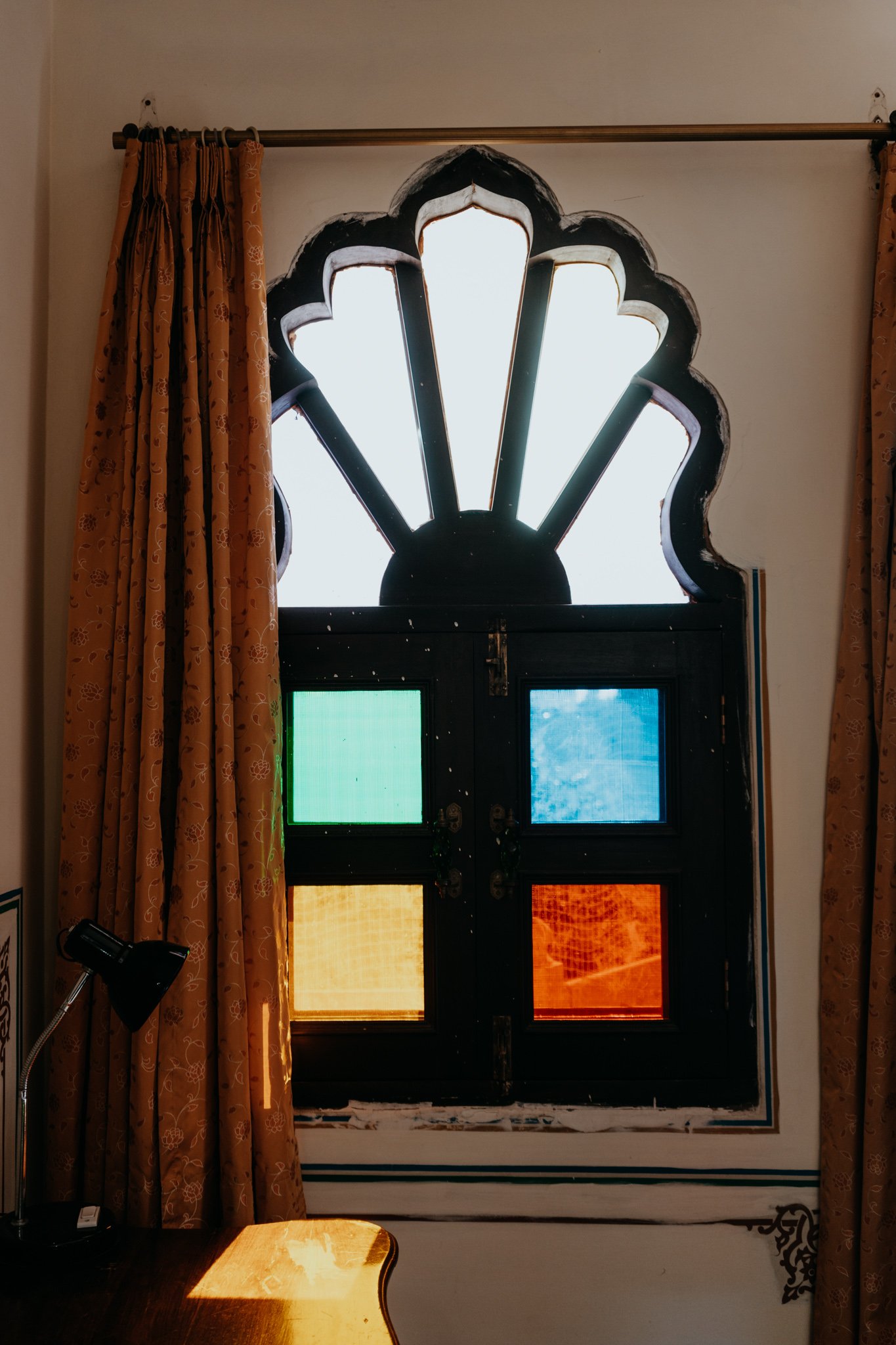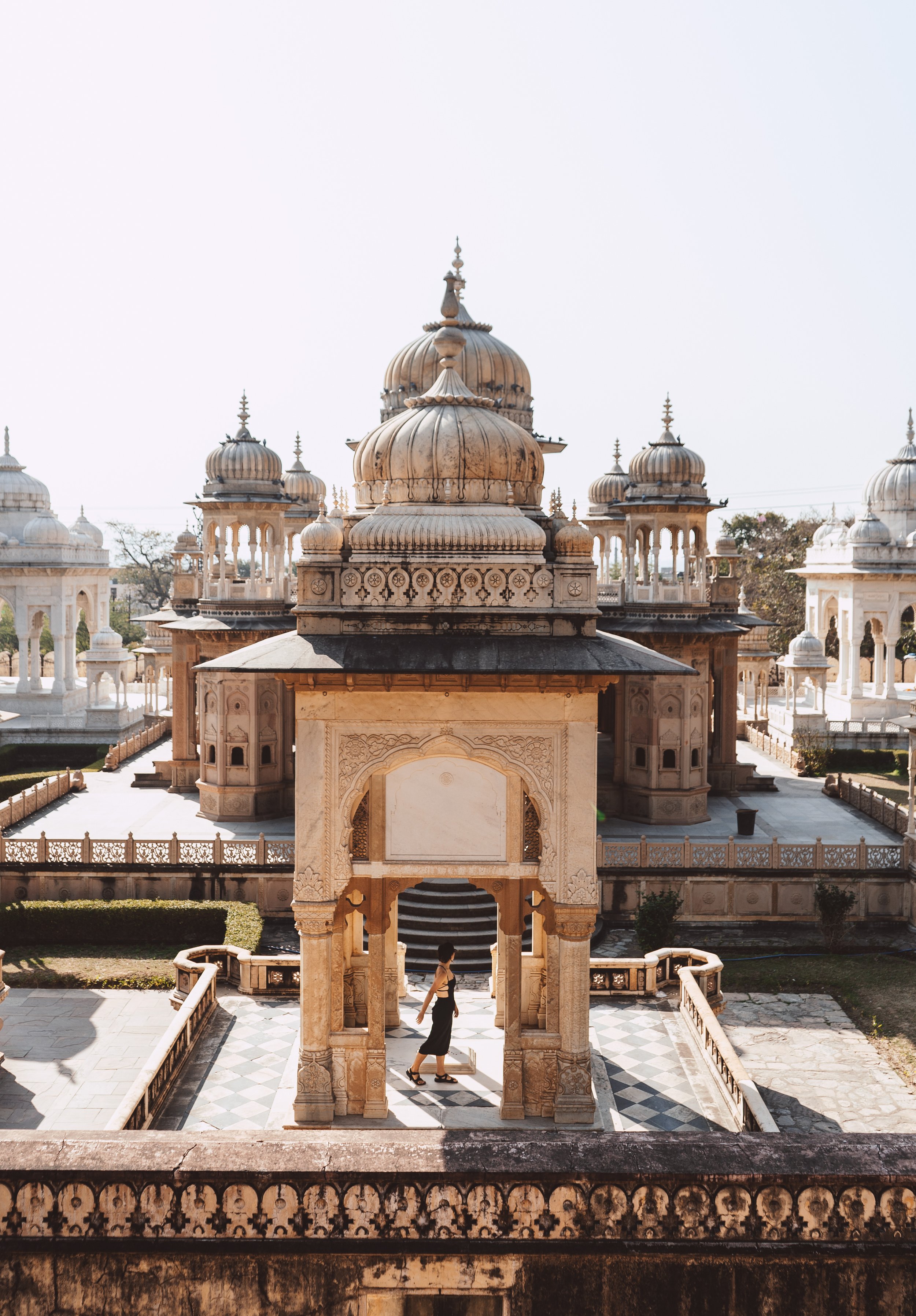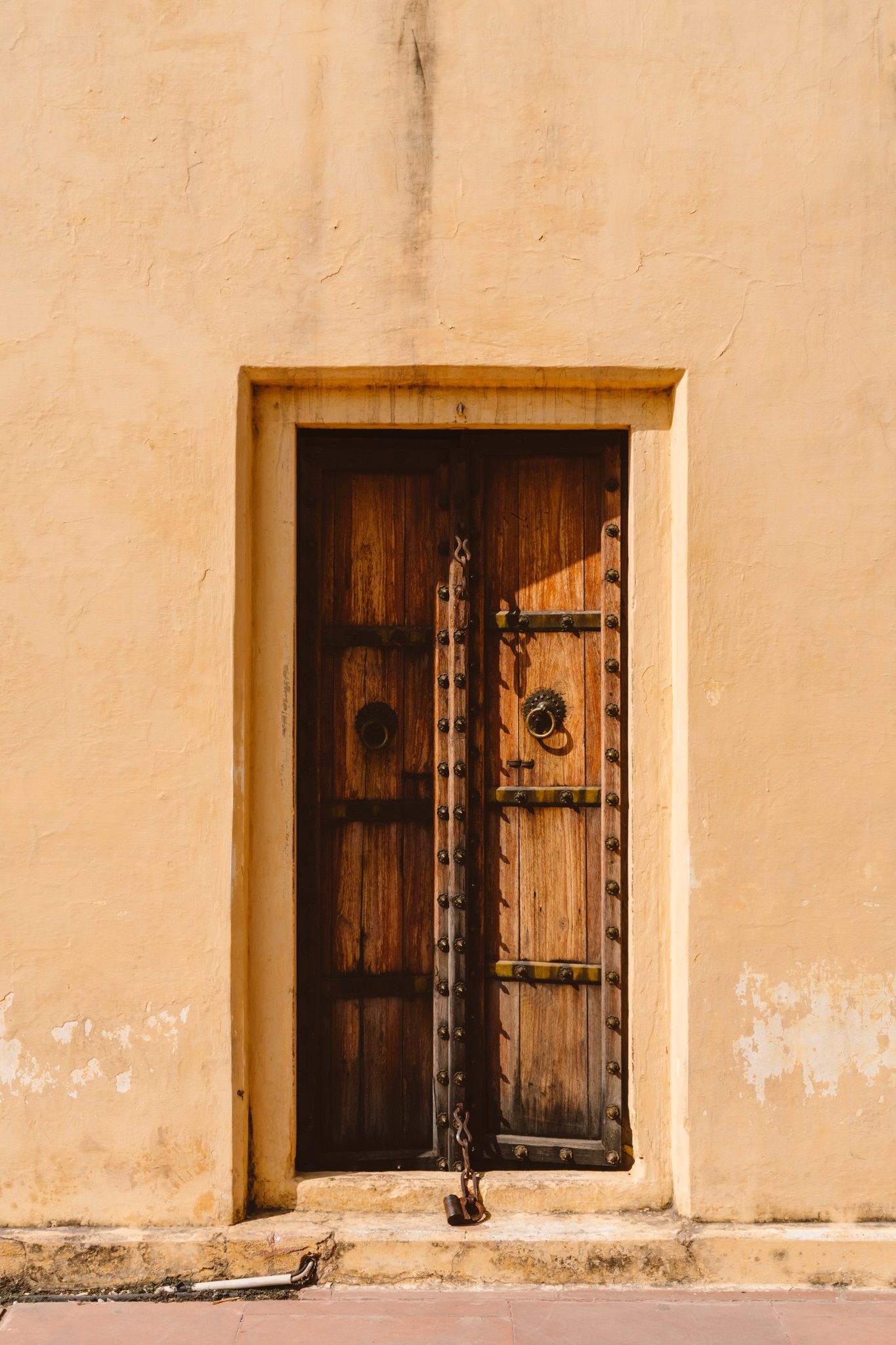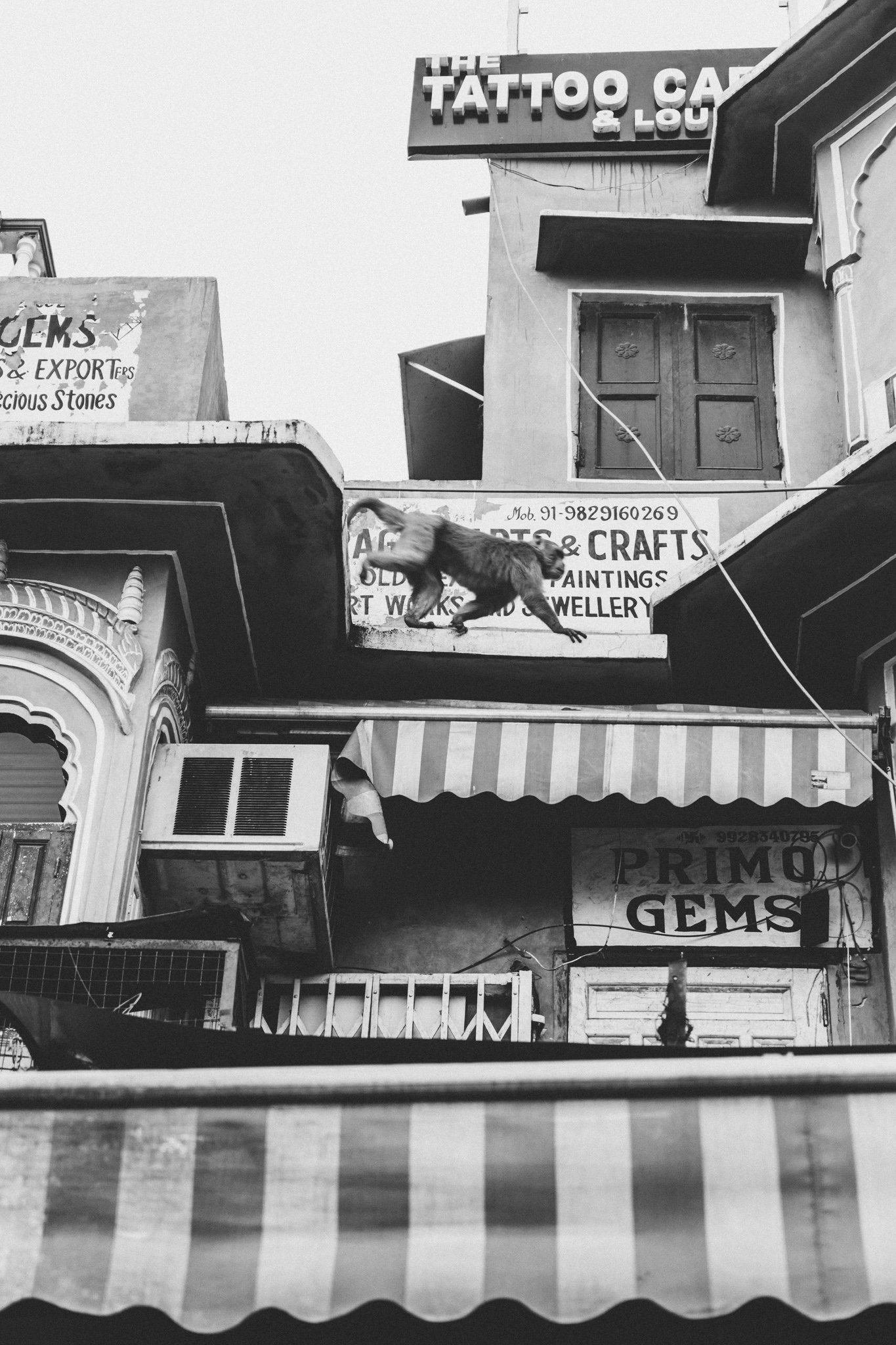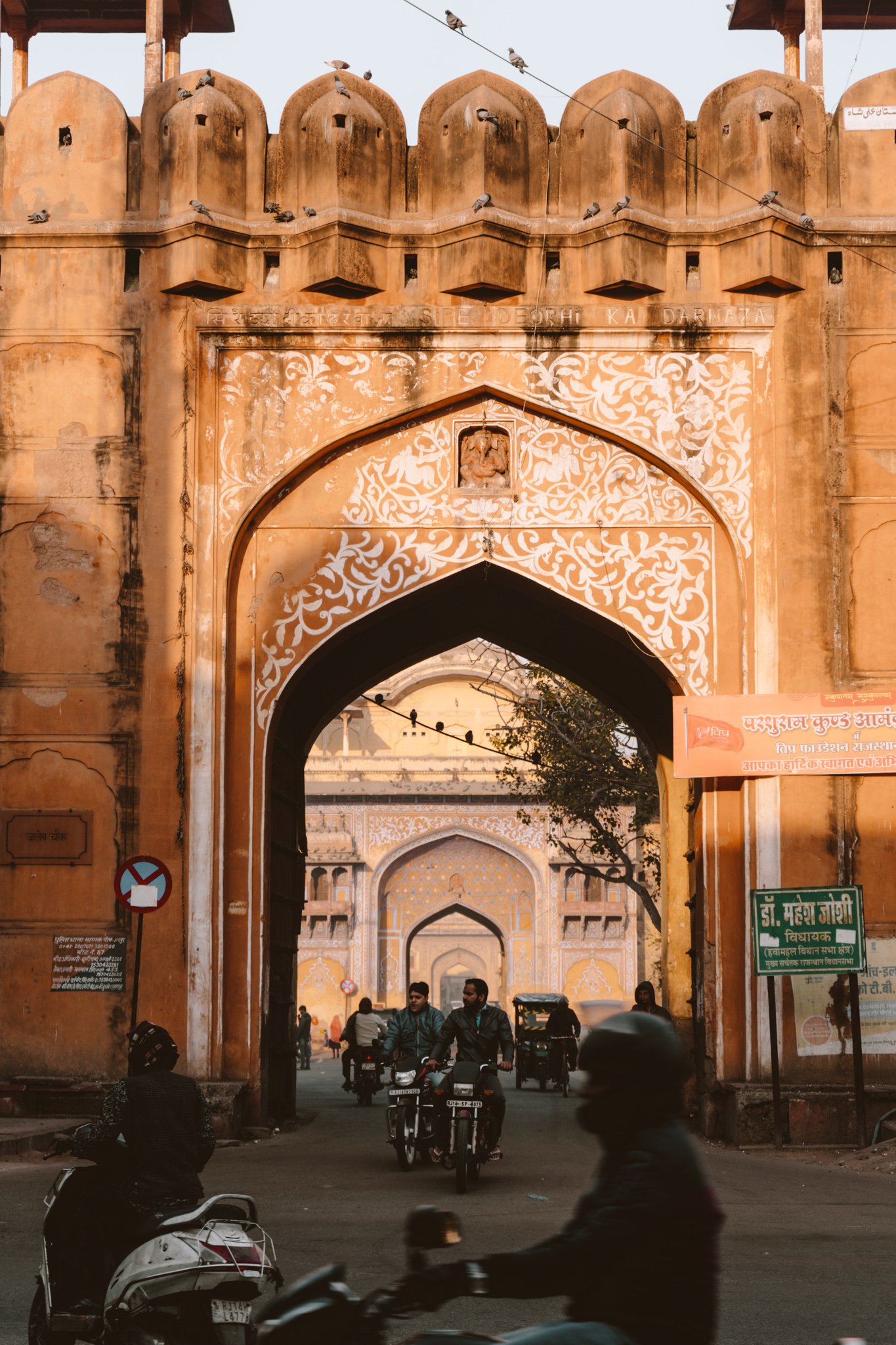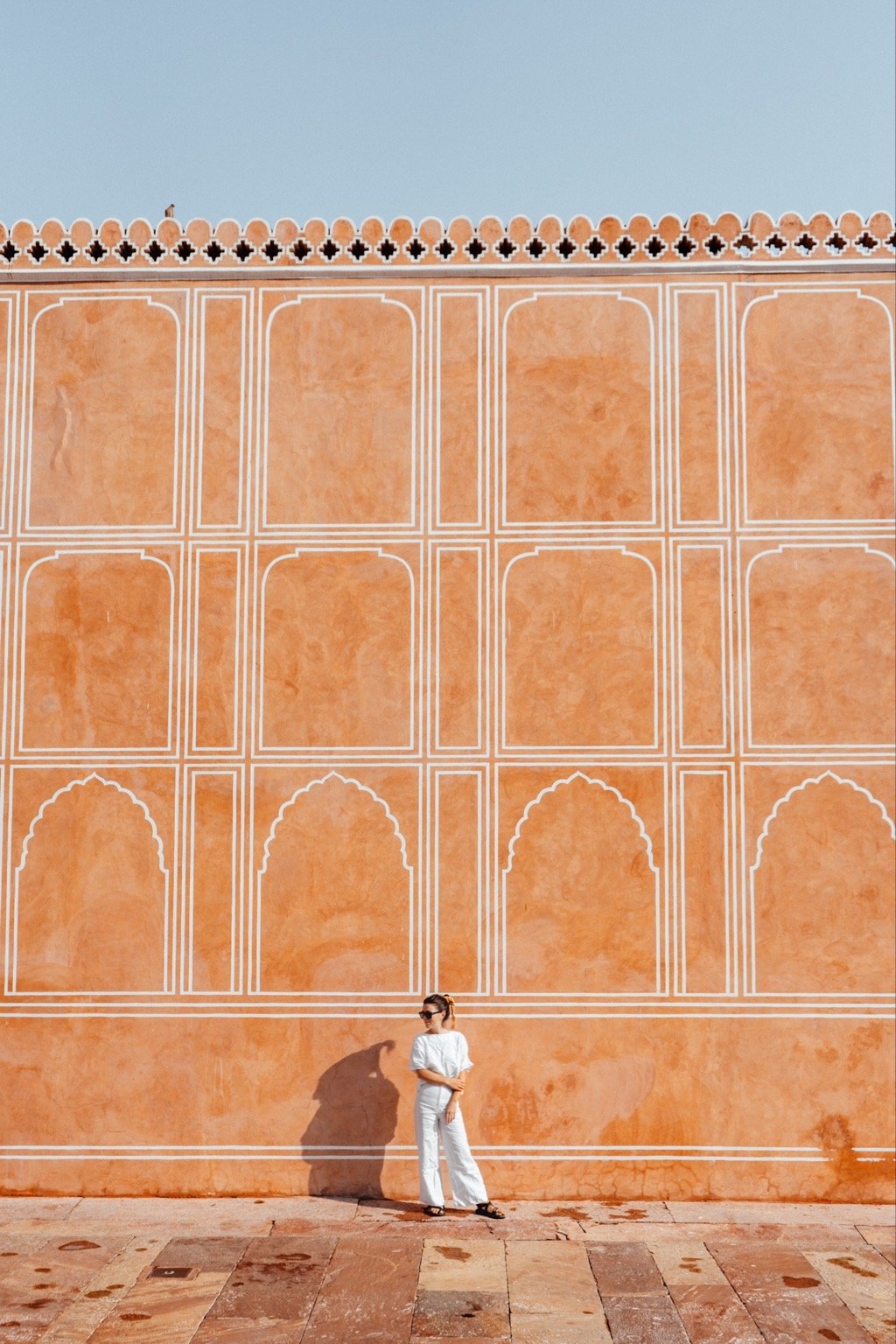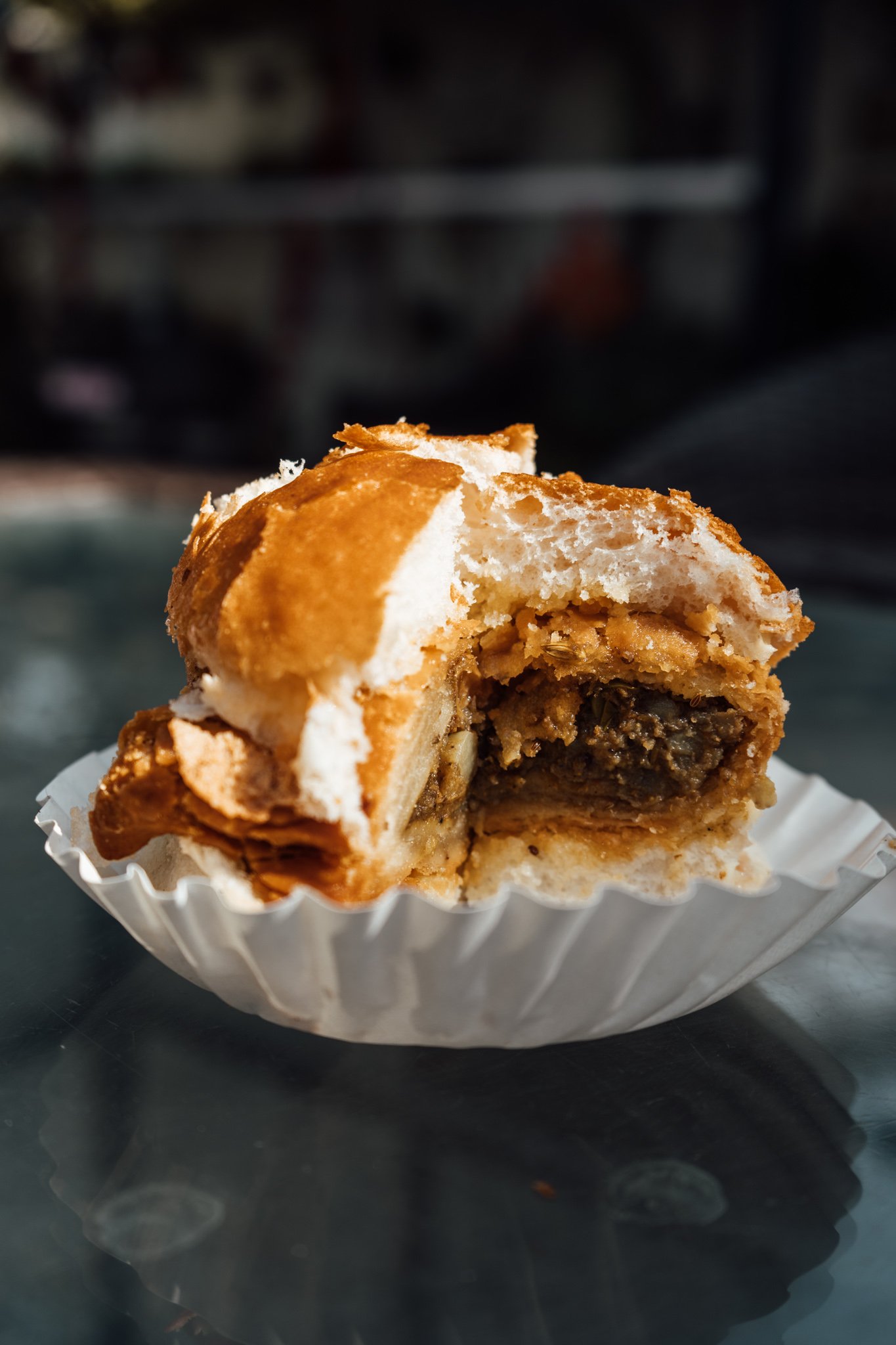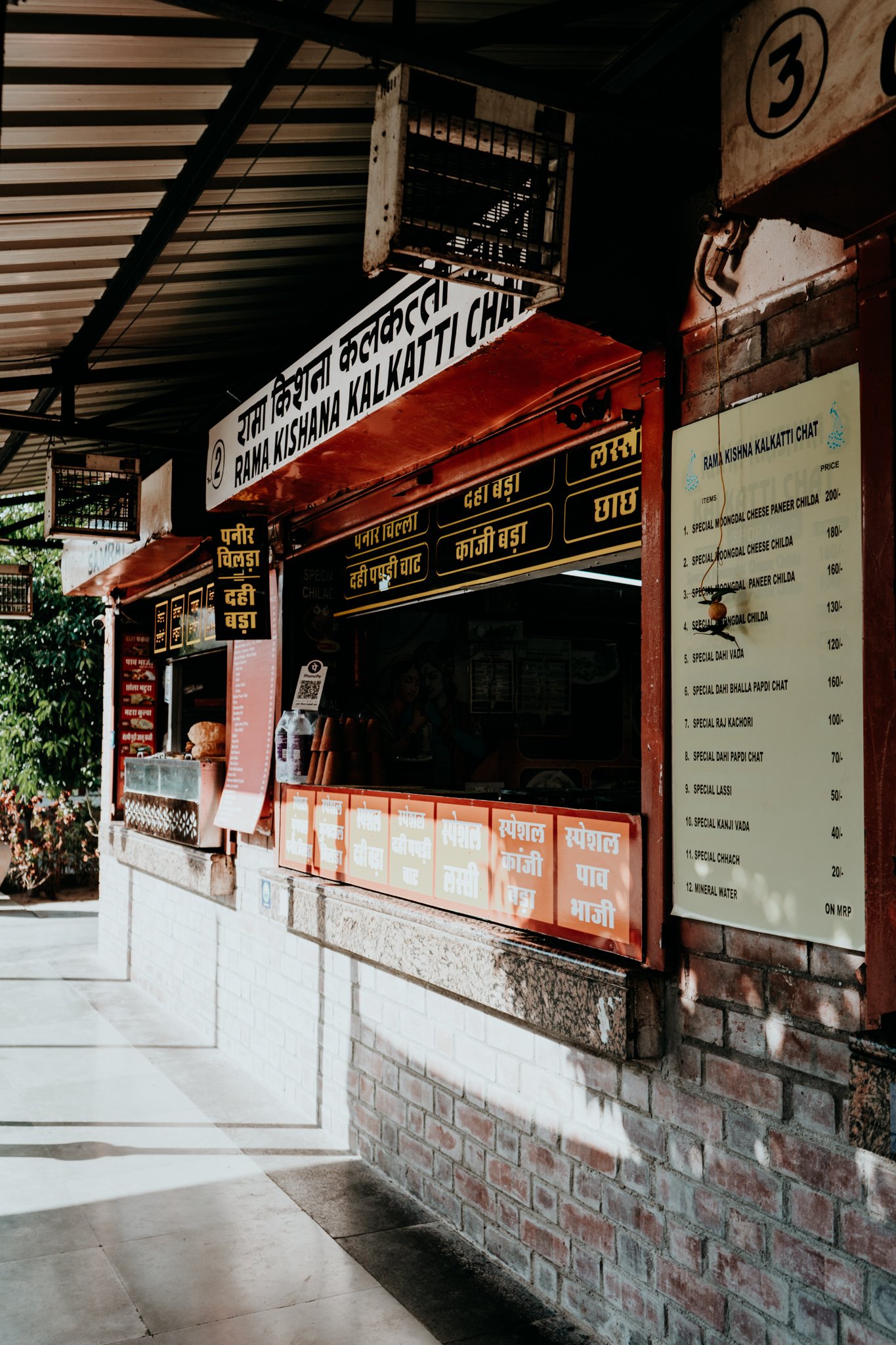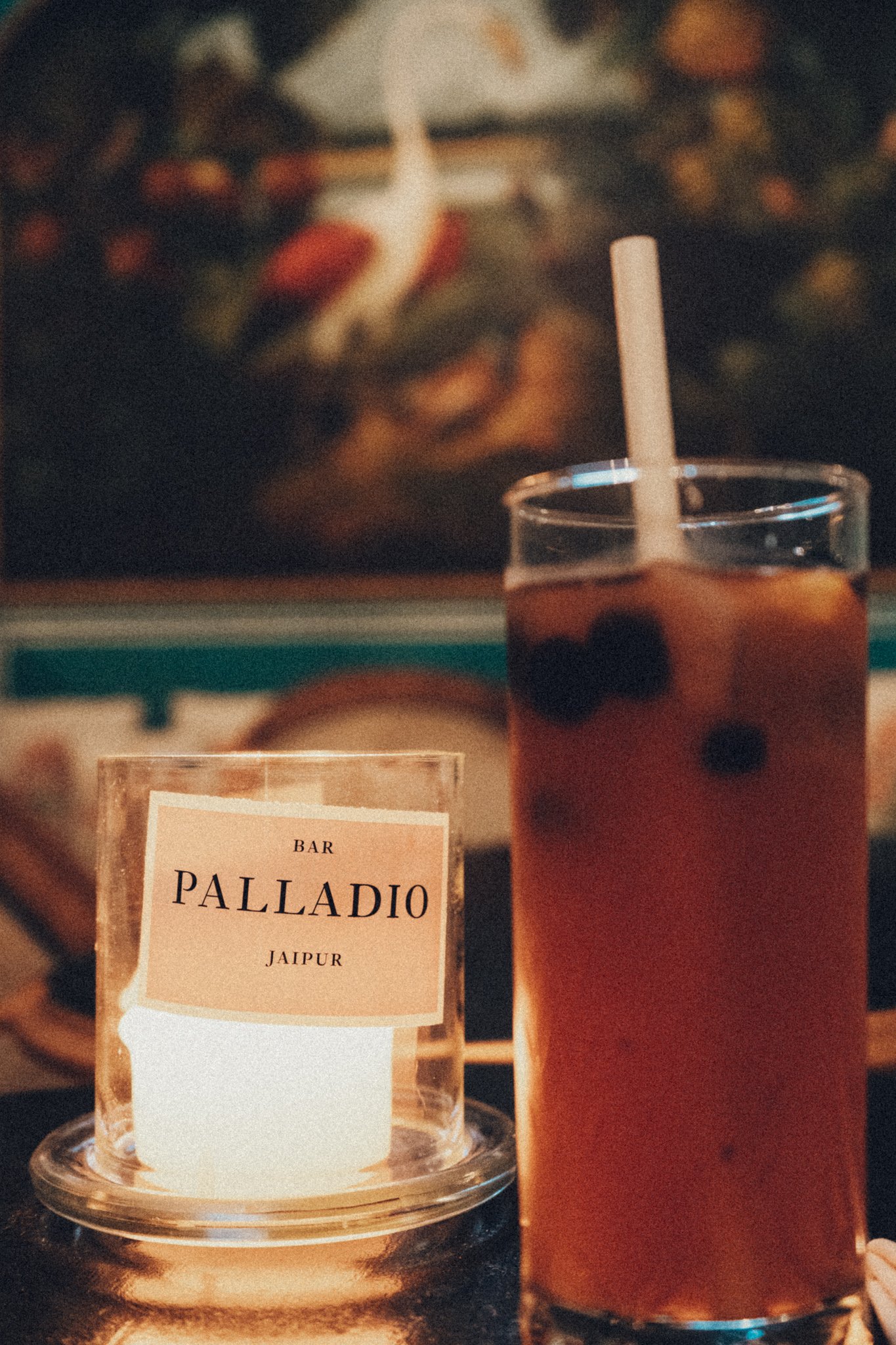3 Days in Jaipur: The Ultimate 3-Day Itinerary for Jaipur, India
This 3-day itinerary for Jaipur is perfect for first-time visitors to India’s Pink City. In it, I’ve included where to stay, what to eat, and all the best things to see and do in the city. I’ve also included an extended 5-day itinerary for those with a little more time to spare.
Bazaar merchants busily sell everything from handicrafts to spices. Street food carts are hurriedly pushed through traffic. Intricate palaces, painted gateways, and sandstone forts create a stunning backdrop to a chaotic city. After spending nearly 3 months exploring the wonders of Rajasthan, Jaipur was the India I had always dreamed of visiting.
Jaipur is the perfect, spirited introduction to Rajasthan for first-time visitors to India. For me, the city’s rich history and vibrant culture weave themselves into an ideal inaugural Indian destination. Jaipur is the largest city in the state and the 10th most populated city in the country. It forms one point in the “Golden Triangle” making it a frequent stop for tourists traveling through India. It’s also India’s first “planned city”, making navigation easier than other Indian metropolises.
This itinerary details how to spend three days in Jaipur, including the city’s best attractions, restaurants, and accommodation. While we opted to spend 10 days in Jaipur, this itinerary is exactly what we would have done on a tighter timeline. By the time you’ve finished this post, you’ll have all the information you need to plan an epic 3-day itinerary with everything from food recommendations and activities to suggestions for where to base yourself during your stay. Read on for the perfect three days in Jaipur!
when to visit jaipur ↴
The most comfortable temperatures are found between October and February. However, generally speaking, there are three notable seasons in Jaipur to consider when planning your trip.
Summer | From April through June, Jaipur is stifling hot. You’ll find yourself attempting to enjoy palaces, stone forts, and other architectural wonders that pre-date any air-conditioning in 35C+ heat.
Monsoon | July through October is the wet season, often referred to as monsoon season. These months are hot and extremely humid. Your travel plans may be affected by adverse weather if you are visiting during this time.
Winter | December and January are the official winter months in Northern India. During this time, days are much colder than you might expect, and dryer too! We visited Jaipur in January during the winter months and found that, while the mornings were bone-chilling, the daytime temperatures were still between 27-30C.
how to get to jaipur ↴
Many travellers visit Jaipur as part of the “Golden Triangle” route, arriving from either Agra or Delhi. It is well-connected to other major Indian cities by air,
The city has its own airport, Jaipur International Airport (Sanganer Airport), that sees the arrival of domestic and international flights. You can also head to Jaipur via highway by bus, private driver, or Uber. We took a taxi to Jaipur from Agra and booked it via the EaseMyTrip app. The bus arrives daily from Delhi, Pushkar, Udaipur, Agra, Mathura, Lucknow, Gwalior, Ahmedabad, Ajmer, and Bharatpur.
The train is a quintessential Indian rite of passage, and trains run regularly to and from Jaipur from all the major cities in Rajasthan and across India.
how to get around jaipur ↴
Jaipur’s traffic is expectedly chaotic, but getting around the city is relatively easy. Using the Uber and Ola apps to get a taxi is easy and affordable. You could also hail a rickshaw on the street, but you’ll need to negotiate the price of your ride and have cash on hand.
If you’re short on time in Jaipur, you might want to consider taking a guided tour of the city. Get Your Guides and Viator both offer a number of private and group tours of Jaipur that will make hitting all the main attractions quick and easy.
You can always hire a driver/private taxi through a reputable company like Jaipur City Cab or Dream Cab Jaipur. This can be extra convenient, but also the most expensive option.
Jaipur also has public transport, though we never utilized it ourselves. The local buses of Jaipur are the cheapest way to get around the city, and there is also a metro, but our hotel staff told us to avoid it as it isn’t complete.
how long to spend in jaipur ↴
In order to see the best of the city, I suggest a minimum of three days spent in Jaipur. That’s why I’ve created this suggested itinerary for three optimized days in the Pink City. Five days in Jaipur gives you a little wiggle room to move more slowly and will allow you to see attractions that are a little further outside the city center, so I’ve added a five-day itinerary expansion option in this post.
things to know before you go to jaipur ↴
helpful apps to download
Uber | ride sharing app that hails cars and rickshaws to take you to a destination of your choosing at a set price
Ola | like Uber, but cash payments only
Google Maps | pin points of interest on a map + download it for offline use to help navigate the city
XE | allows you to check currency conversion rates
composite tickets
If you’re anything like me, you’ll want to see all of Jaipur’s attractions. You’ll save yourself time waiting in line and money if you purchase the composite ticket. This is something we didn’t know about (or weren’t paying attention to) until near the end of our time in Jaipur, and it’s a shame, because it includes entry into most of the major sites we paid to go to anyway. The ticket is valid for two days and costs INR 1000.
Sites included in the composite ticket entry include:
Amer Fort
Albert Hall Museum
Hawa Mahal
Jantar Mantar
Vidyadhar Garden
Nahargarh Fort
Sisodia Garden
where to stay in jaipur ↴
neighbourhoods i recommend:
Pink City | The old, historic core of Jaipur with main attractions like City Palace + Hawa Mahal
Sindhi Camp | A residential neighbourhood brimming with street food + budget accommodation
C-Scheme | An upscale area in the north-eastern part of Jaipur that’s home to hip cafés, co-working spaces, + fantastic restaurants
Bani Park | A relatively quiet suburban area with good shopping + upmarket hotels
HOTELS I RECOMMEND:
Sajjan Niwas Hotel | in a quieter part of the city near general stores, includes a swimming pool + rooftop restaurant (this is where we stayed)
The Hosteller | a highly-rated hostel with private and dorm rooms
Radisson Blue Hotel | well-located upscale chain hotel
Chokhi Dhani | luxury hotel that prides itself on an immersive, cultural experience for guests
Raj Palace | a taste of royal life, accommodation decorated with historical artefacts
Hilton Jaipur | an upscale chain
Rambagh Palace | the high-end luxury stay for those willing to pay heftily
Oberoi Rajvilas | beautiful from every angle, a luxury stay
We love using Booking.com to book the best places to stay around the world.
suggested 3-day + 5-day itineraries for jaipur ↴
DAY 1: HAWA MAHAL, CITY PALACE, JANTAR MATAR, + NAGHARA FORT
Enjoy breakfast at Tattoo Café with the best view of Hawa Mahal across the road. From there, walk to City Palace for open at 9:30 AM. After roaming around the palace and exploring all the exhibits, walk across the road to Jantar Matar for a look at the giant sandstone astronomical instruments. In the evening, make your way to Nahara Fort for golden hour.
DAY 2: AMER FORT, PANNA KUND STEPWELLS, JAHAL MAHAL, + GIATORE CENOTAPHS
Head to Amber Fort for opening at 8 AM, then take the back exit of the fort to the Panna Kund Stepwells, stopping by the hri Jagat Shiromini Hindu temple on your way. On your way back towards the city, stop by Jahal Mahal to explore the palace on the water. In the evening, I suggest visiting Giatore Cenotaphs to watch the golden lighting hit the beautiful marble monuments.
DAY 3: PATRIKA GATE, ALBERT HALL MUSEUM, MASALA CHOWK, + GALTAJI TEMPLE
Arrive at Patrika Gate bright and early, then head to Albert Hall Museum for a wander. Walk from the museum to Masala Chowk food court to taste local street food. Later, make your way to Galtaji Temple (the Monkey Temple). End the evening with a cocktail at Bar Palladio.
DAY 4 (OPTIONAL): MAHARANIYO KI CHATRI CENOTAPHS, Raj Mandir, + JAIGART FORT
An additional day in Jaipur will allow you to visit another, an equally fabulous set of cenotaphs in the morning, attend a matinee showing of a Bollywood film in the afternoon, and catch one of Jaipur’s famous sunsets from the typically crowd-free Jaigart Fort.
DAY 5 (OPTIONAL): SAMODE PALACE +/or Pink City cooking class
Adding a fifth day to your Jaipur itinerary gives you a chance to wander outside the city to Samode Palace and/or learn to make Rajasthani cuisine at a cooking class.
best things to see + do in jaipur ↴
shop at all the bazaars
Bapu Bazaar | This bazaar is a treasure trove of traditional textiles, crafts, and Indian garb, including lehengas and sarees.
Chandpole Bazaar | Homegoods galore are eagerly waiting t be bought from this 300-year-old market. This bazaar is primarily known for selling hand-carved marble goods (think statues, vases, etc.).
Johari Bazaar | Johari is one of Jaipur's most popular shopping spots. The word Johari translates to jeweller/jewellery, so it’s fitting that this bazaar is brimming with traditional Rajasthani jewellery. There’s also lots of traditional Indian clothing to be bought here.
Nehru Bazaar | People primarily come to Nehru searching for one thing: juttis. These traditional North Indian shoes are a Jaipur specialty and Nehru sells every colour, bead pattern, and style you could possibly dream of.
Tripolia Bazaar | Possibly the busiest bazaar in Jaipur, and also the city’s oldest. Come here for rugs, bangles, and all the fabrics!
visit cenotaphs
Cenotaphs are cremation monuments, and Jaipur has many. All of them are beautiful, carved marble structures that exceeded my expectations. They were also some of he most budget-friendly attractions in Jaipur!
Maharaniyo ki Chatri | dedicated to the female members of the royal family, INR 100 per foreign visitor
Gaitor ki Chhatriyan | cenotaphs of the former Maharajas of Jaipur, INR 50 per foreign visitor
Galta Ji/Monkey Temple
Galta Ji, known also as the Monkey Temple, is a Hindu pilgrimage. They’ll be dipping themselves in the water, which is considered holy, to receive blessings and to cure their ailments. Please don’t dip in the water if you are not Hindu— bathing in the water is deeply religious. The temple complex is located outside the city in a mountain setting that makes it feel a bit surreal. You can expect monkeys waiting outside the temple to steal bits from you, so come prepared to hold your bags tightly!
ADMISSION | INR 200 per foreign visitor
Jantar Mantar
Jantar Mantar is a collection of 19 astronomical instruments used to calculate time and chart the stars and planets. It features the world’s largest sundial, Samrat Yantra, which is nearly 300 years old. You can opt for a guided tour, but there are plaques all around in both English and Hindi so you can easily guide yourself around the complex. I found myself in utter awe of the scale of all the instruments, as well as their detail. I highly recommend doing this after visiting the City Palace, as it’s right across the street.
ADMISSION | INR 200
Albert Hall Museum
As the oldest museum in Jaipur, Albert Hall Museum serves as the official museum of Rajasthan. While the interiors are filled with artefacts, paintings, and antiquities, it’s the building’s exterior that draws most of the crowds. So intricate are the details of Albert Hall that Indian couples from all over come to have their photographs taken in front while pigeons fly in the background.
Photo tip: There are local vendors selling birdseed across the road from the front gate of Albert Hall if you’re keen to get a pigeon in your pic. Be warned though: once they start flocking to you, they will not leave you alone (which is why we opted to watch others fight them off).
ADMISSION | INR 200 per foreign visitor
Amber (Amer) Fort
Looming above Maota Lake, this giant sandstone fort has sat sprawled across the Aravalli hills since 1592. Amber Fort, sometimes referred to as Amer Fort, was the Jaipur attraction that surprised me the most. I didn’t realize until we arrived just how expansive the fort complex was. We spent hours walking through every archway, getting lost in the maze of narrow marble staircases that opened up to room after room of visual delight. We visited at opening (8 AM), but you can also visit in the evening during the fort’s Light and Sound Show.
There are three main ways to get to the entry of Amber Fort, but only two of them are recommended or ethical. Please DO NOT participate in the elephant rides that take tourists up the walkway to the fort. This is harmful to the animals, and the only way activities like this will stop is if there is no longer a demand for them. The other two ways of getting to the Amber Fort entrance are:
ON FOOT | From the bottom of the hill, you’ll see a stone road leading to the fortress at the top. The walk takes approximately 10 minutes along a gradual incline.
DRIVER | You can get a driver to take you around the back of Amber Fort
Panna Meena Ka Kund
Another gorgeous architectural photo spot in Jaipur that simply shouldn’t be missed (especially since it’s just a short walk from the Amber Fort). This beautiful butter-yellow stepwell is estimated to be 500 years old. You can no longer walk down the stepwell, but its symmetry is something to marvel at regardless.
ADMISSION | free
City Palace
Located in the heart of Jaipur, the City Palace usually sits at the top of most tourist’s bucket list, and for good reason. The palace grounds are comprised of a number of painted rooms, mini museums, and detailed courtyards. Every inch of the palace is beautiful, and it’s easy to spend a few hours here. Maharaja Sawai Jai Singh commissioned the construction of the palace in 1729, and the royal family still reside here. The areas that were most interesting to me were:
Pritam Niwas Chowk | The famous gate photos are taken here in the Pritam Niwas Chowk, or “courtyard of the beloved.” Each gate/door represents one of the four seasons– Lotus Gate represents summer, Peacock Gate: Autumn, Rose Gate: Winter and Leheriya Gate: Spring. Because the courtyard is so photo-worthy, most people flock here straight away. As of late 2022, three of the four gates have been roped off in an effort to preserve the painted details. There is still an opportunity to sit on the side bench at the Peacock Gate, but this is the entryway to the courtyard, so you’ll need to be patient with people walking in and out.
Sukh Niwas | You’ll undoubtedly recognize this from Instagram, but there’s a reason its image is plastered online– it’s visually striking. The blue room is detailed with white paint, making it a vibrant photo op. This room is not included in general admission, so you’ll have to pay for the upgraded Royal Splendor pass to enter here.
Textile Exhibit | This small museum-type exhibit showcases textiles of the royal family including luxury fashion throughout history.
ADMISSION | INR 700 for foreigner general admission, or INR 3500 for Royal Splendour entrance per foreign visitor
Nahargarh Fort
You simply cannot miss a sunset at Nahargarh Fort. Built by AMaharaja Sawai Jai Singh in 1734, the fort was meant to be a retreat space for the royals. The painted frescoes, 360 views, and giant pinky fort wall all make Nahargarh Fort unmissable on a trip to the city.
ADMISSION | INR 200 per foreign visitor
Jaigarh Fort
Jaigarh Fort was built in 1726 as a military fort. It’s actually connected to Amber Fort by way of secret underground tunnels. One of the main attractions of the fort is its cannon, which. is the largest cannon on wheels in the world. This fort is less visited than Nahargarh Fort, but that also means that it is less maintained. I found Jaigarh Fort a little rundown but enjoyed that it was crowd less.
ADMISSION | INR 150 per foreign visitor
Jal Mahal
Jal Mahal looks nearly like it’s floating on Man Sagar, the lake underneath it. And, while you can’t go inside the palace, you should add it to your itinerary if only for a photo. Sunrise and sunset are especially beautiful times to pop here, but I’d tack it on to your journey to the Amber Fort as it’s on the way.
ADMISSION | free
Patrika Gate
A quick 25-minute drive outside the city center will get you to Patrika gate, a relatively new focal point for Jaipur. The gate is meant to be the entrance to a local park, but it tends to be the centerpiece thanks to its detailed paintings depicting Rajasthan’s state history.
ADMISSION | free
Hawa Mahal
It’s likely that if you’re heading to Jaipur, your trip may have been prompted by the Hawa Mahal’s exemplary architecture. Funnily enough, the symmetrical photo of this pink sandstone palace and its neat lattice windows is actually the back of the building. Backwards or forwards, it exudes the kind of grandeur Jaipur is known for. In 1799, Hawa Mahal, also known as “The Palace of Winds”, was built for royal women to watch the dramas of the day unfold on the city streets without being seen themselves.
Photo tip: If you’re here for a photo op and to stand in awe of the back of the palace, there are two cafés across the road from it where you’ll find the best vantage point: The Tattoo Café or Wind View Café. Both have a minimum INR 500 spend required, and don’t expect great food at either. Go in the evening or else you’ll have to deal with harsh lighting like I did (oops).
If you’re a history fanatic, you shouldn’t miss the tour of Hawa Mahal.
ADMISSION | INR 200 per foreign visitor
Shri Jagat Shiromini
This stunning Hindu Temple sits behind the Amber Fort. While it’s quite small, the architecture is visually grand. It’s worth a stop on your walk down to the Panna Meena Ka Kund stepwells!
ADMISSION | we paid INR 30, but it’s reportedly a free site to enter
Raj Mandir
No visit to Jaipur would be complete without watching a Bollywood film at the Raj Mandir Cinema, an art deco cinema that’s been rated the “third best movie theater in the world.” Crowds are known to sing, dance, cheer, and boo as the film plays, promising you a lively viewing experience.
ADMISSION | tickets start at INR 150
where to eat in jaipur ↴
Below are some of the best spots to eat in Jaipur, including my personal favourites. You can read my full food guide here.
Curious Life Coffee Roasters | there’s no better brunch in the city + the café is owned by an Indian military veteran
Gulab Ji Chai Wale | known for having the best chai in Jaipur + famous for its bun samosa
Half Light Coffee Roasters | excellent food complimented by coffee roasted to perfection
Masala Chowk | classic Rajasthani street food served in a clean open-air market
Bar Palladio | an upscale cocktail experience in the most beautiful setting
map ↴
Find everything you need for the perfect 3-day itinerary in Jaipur, India on the map below.

